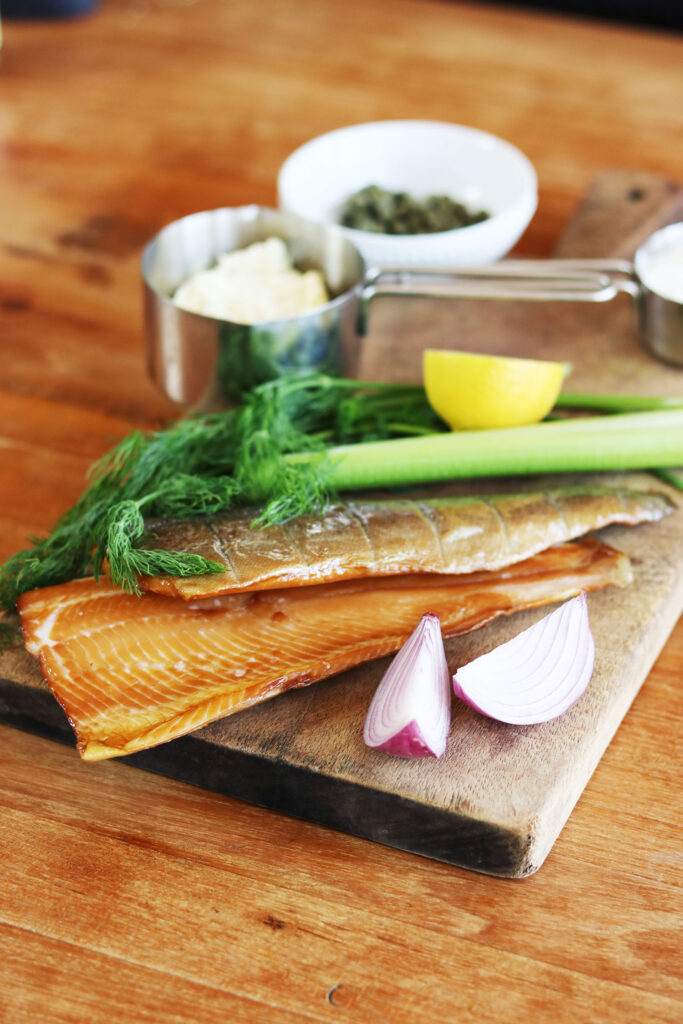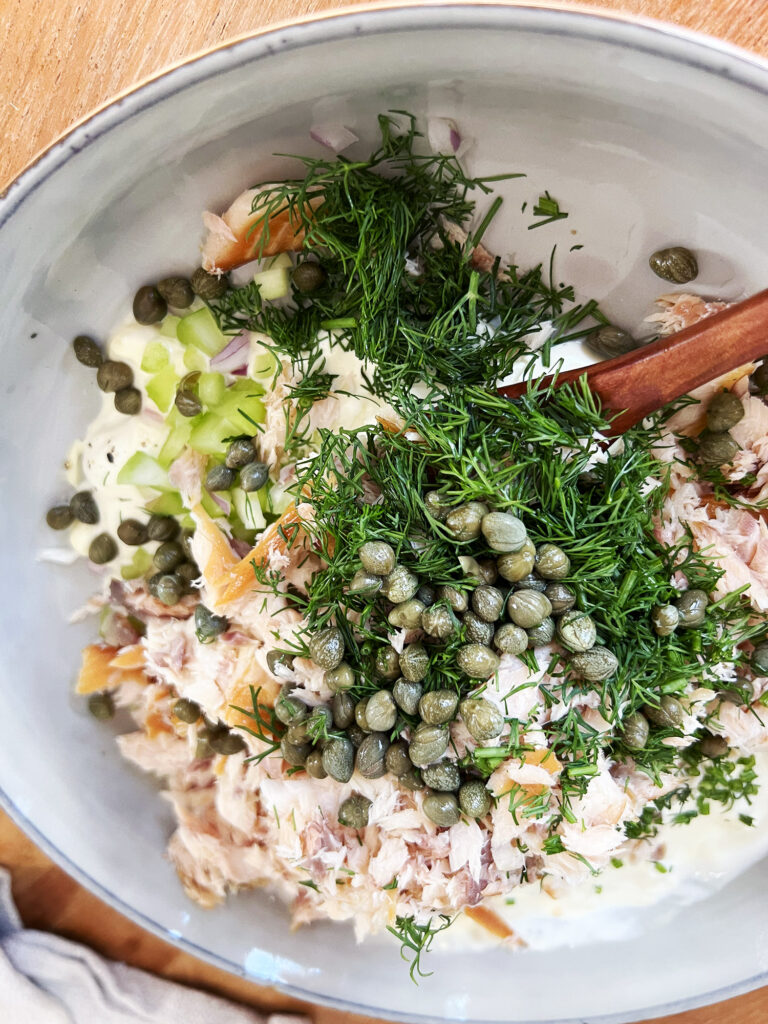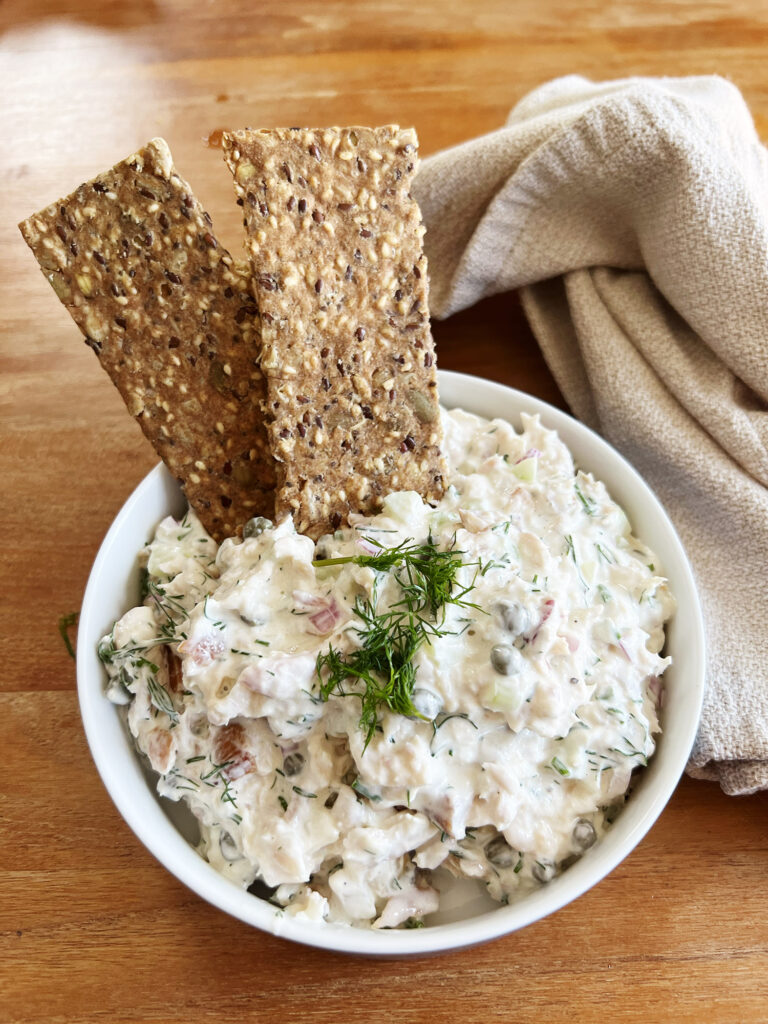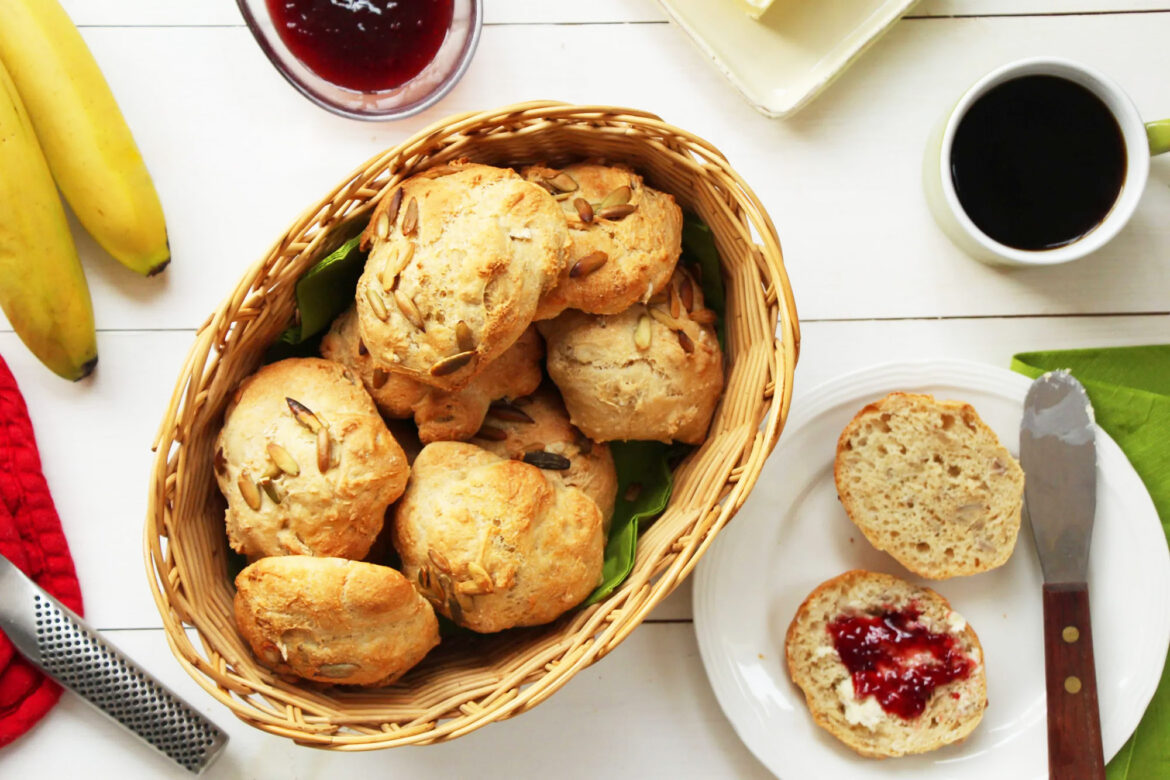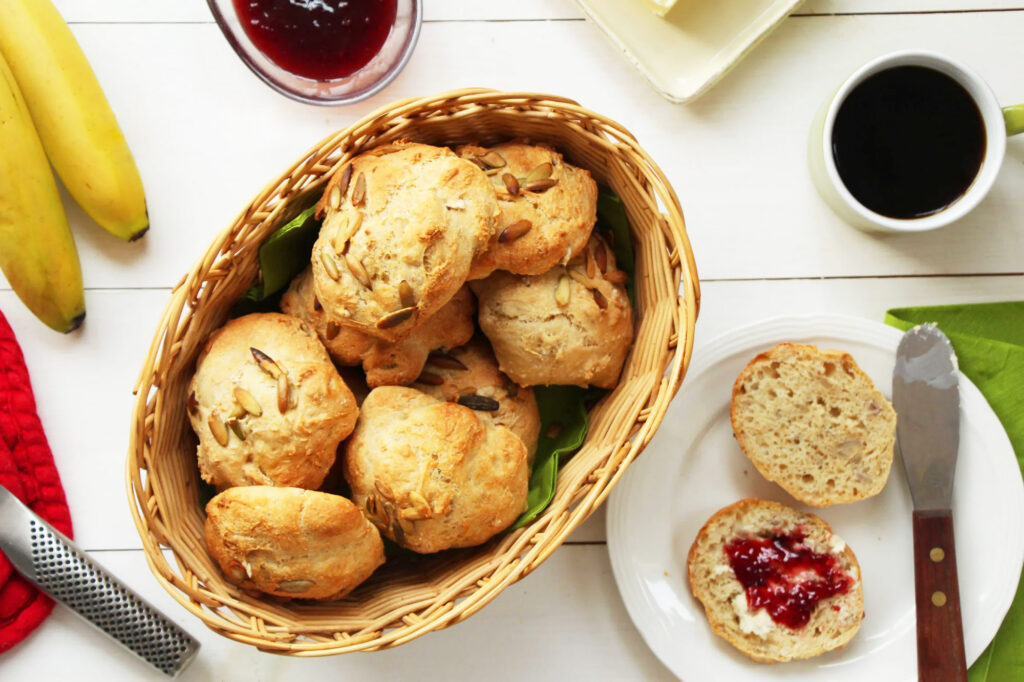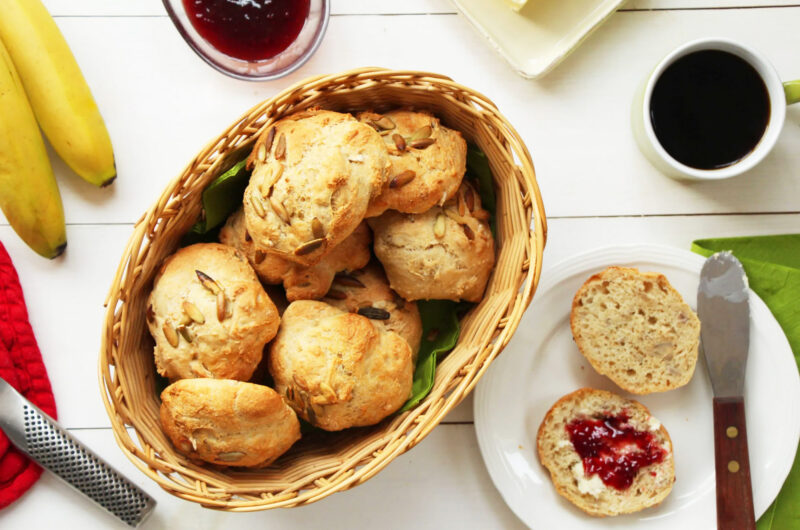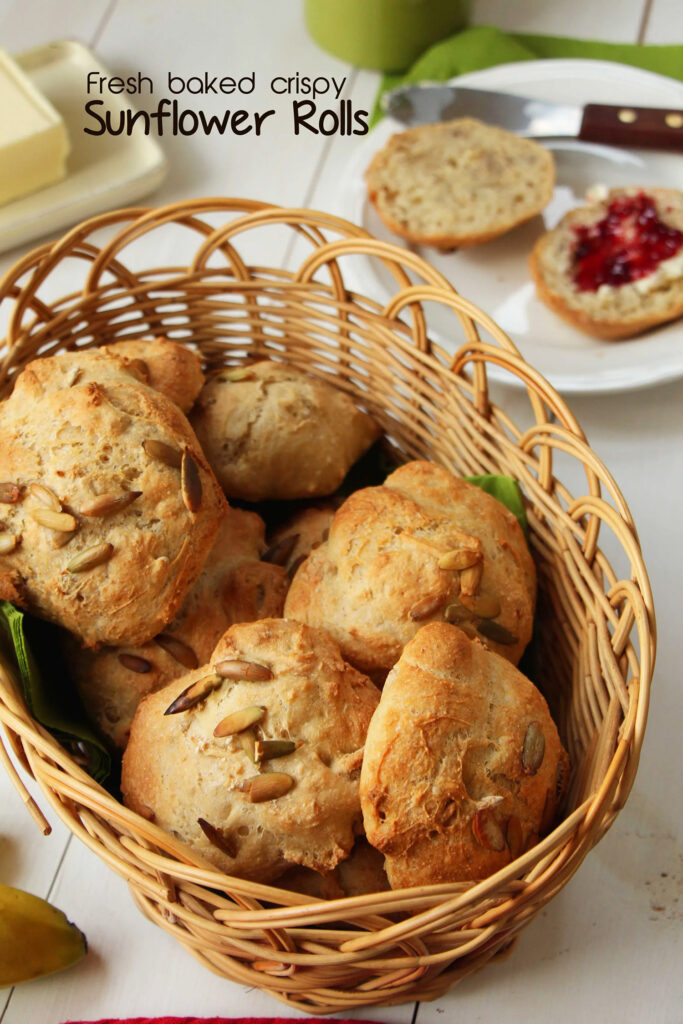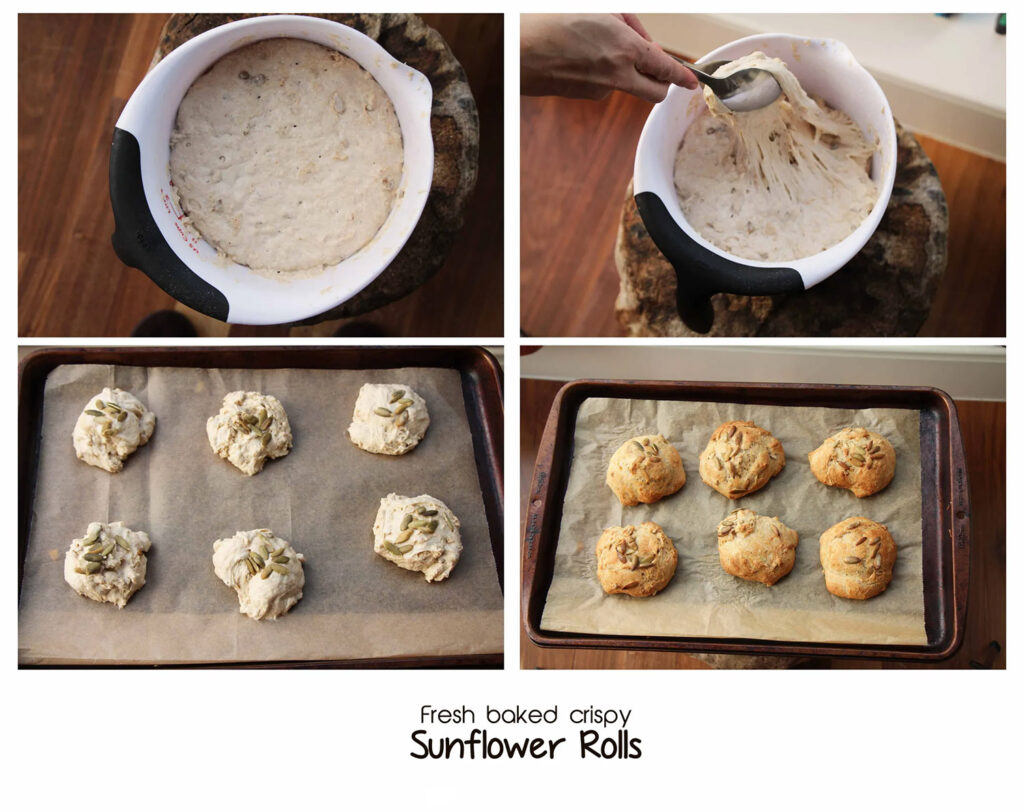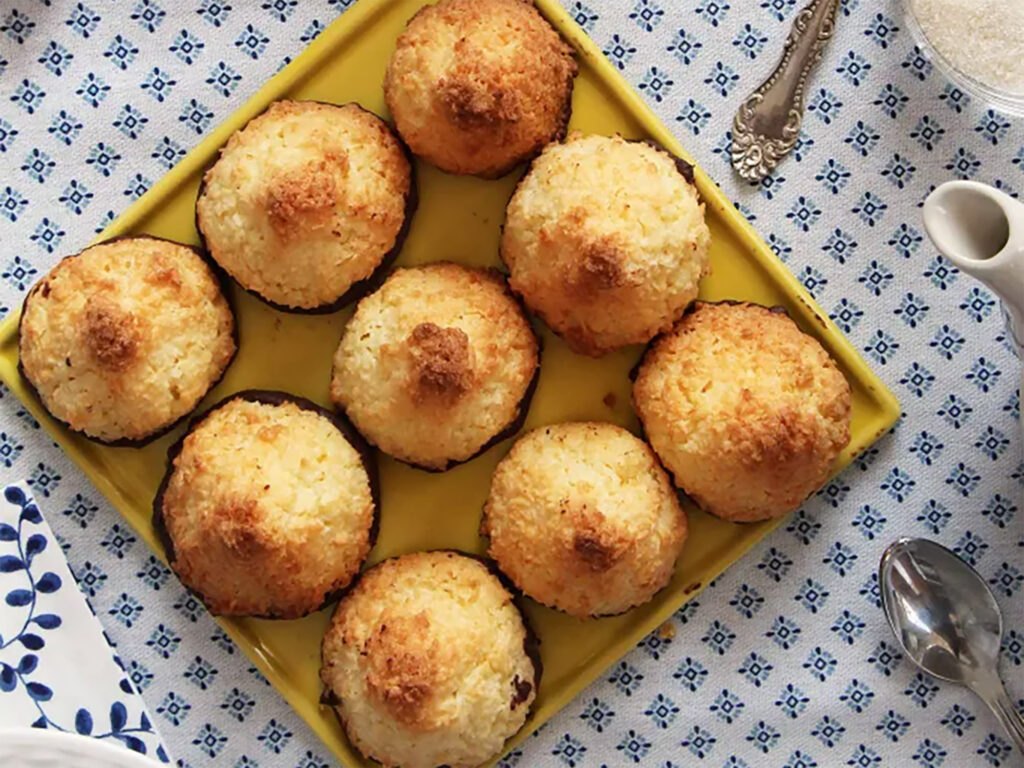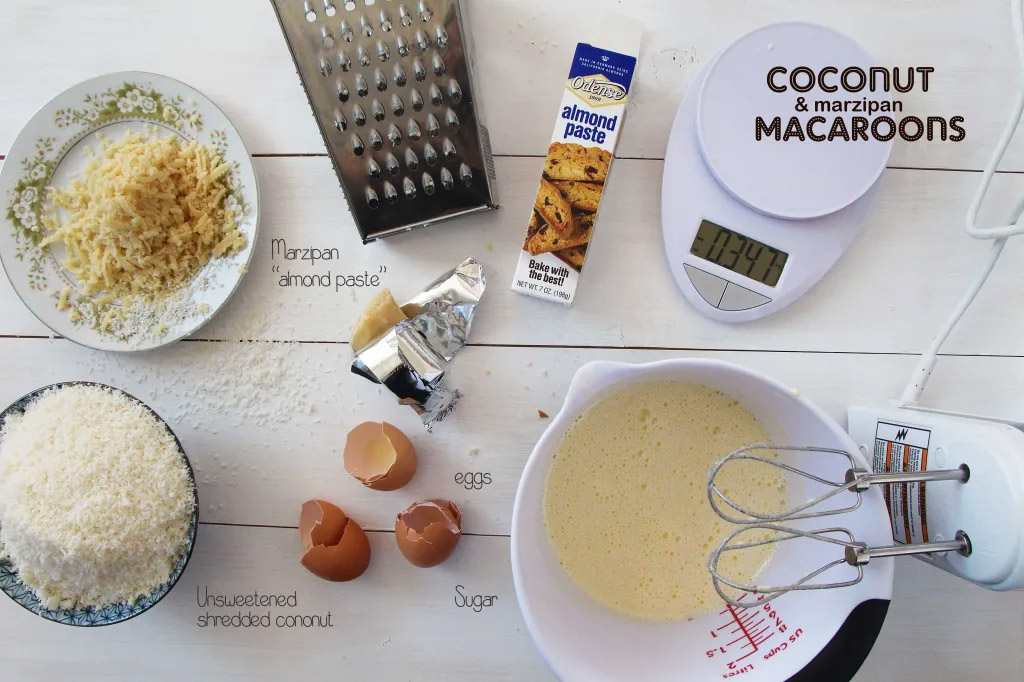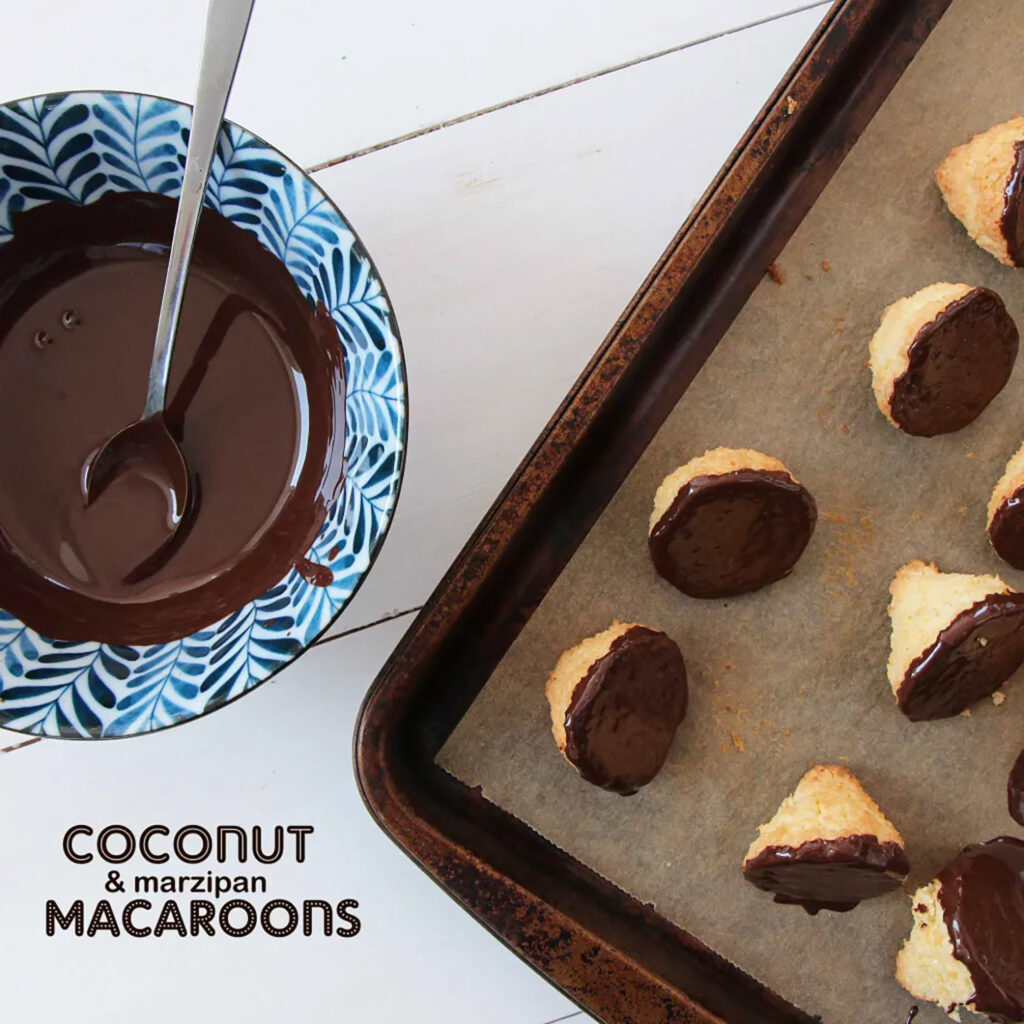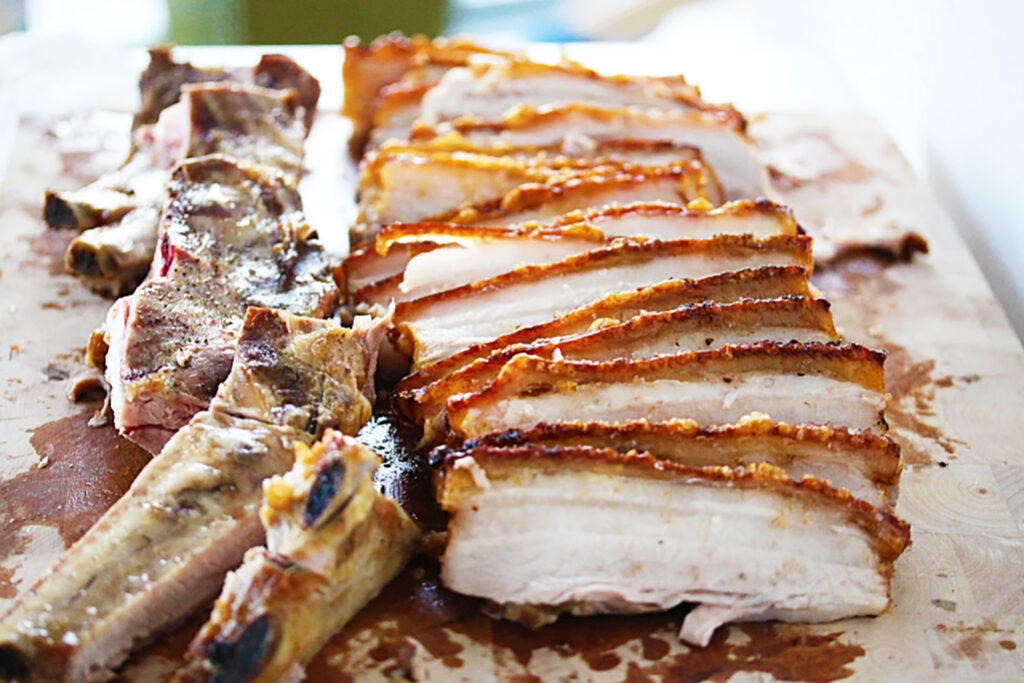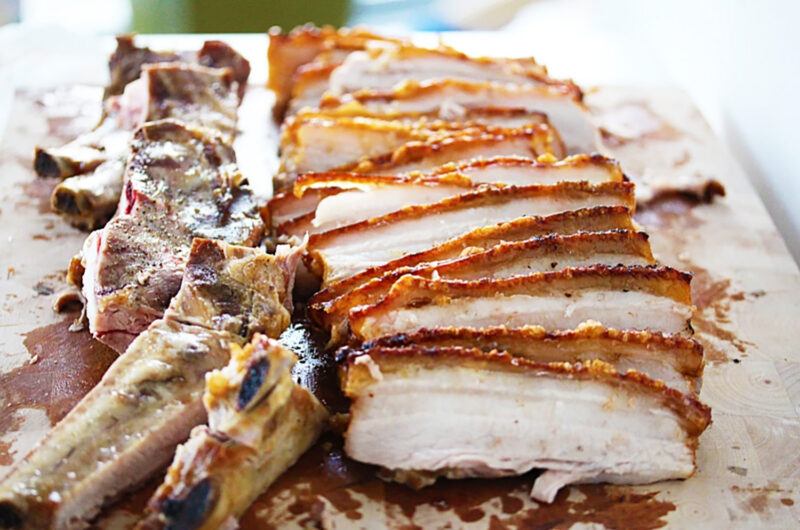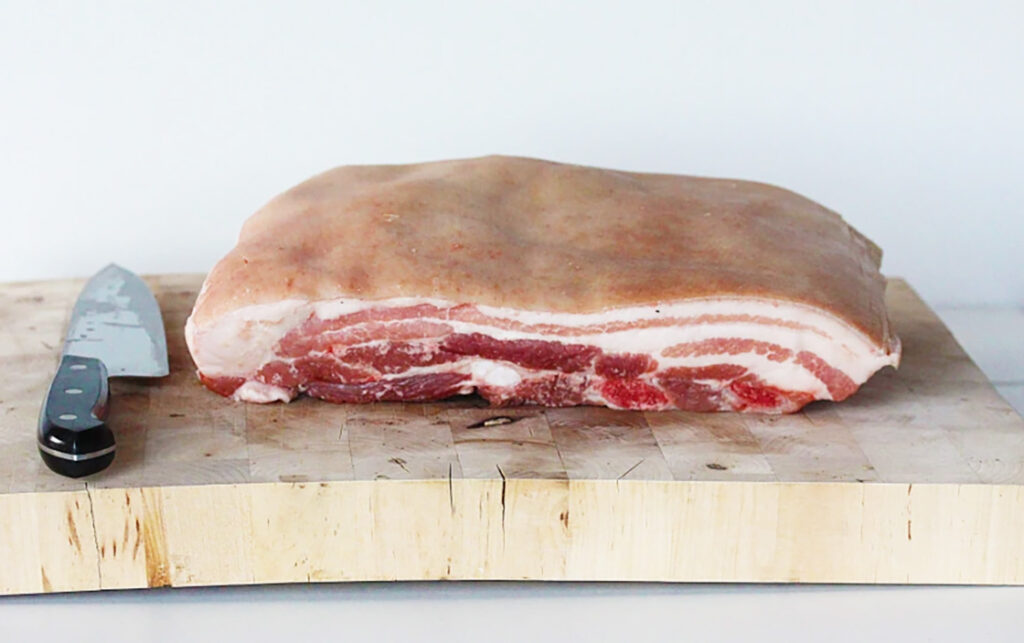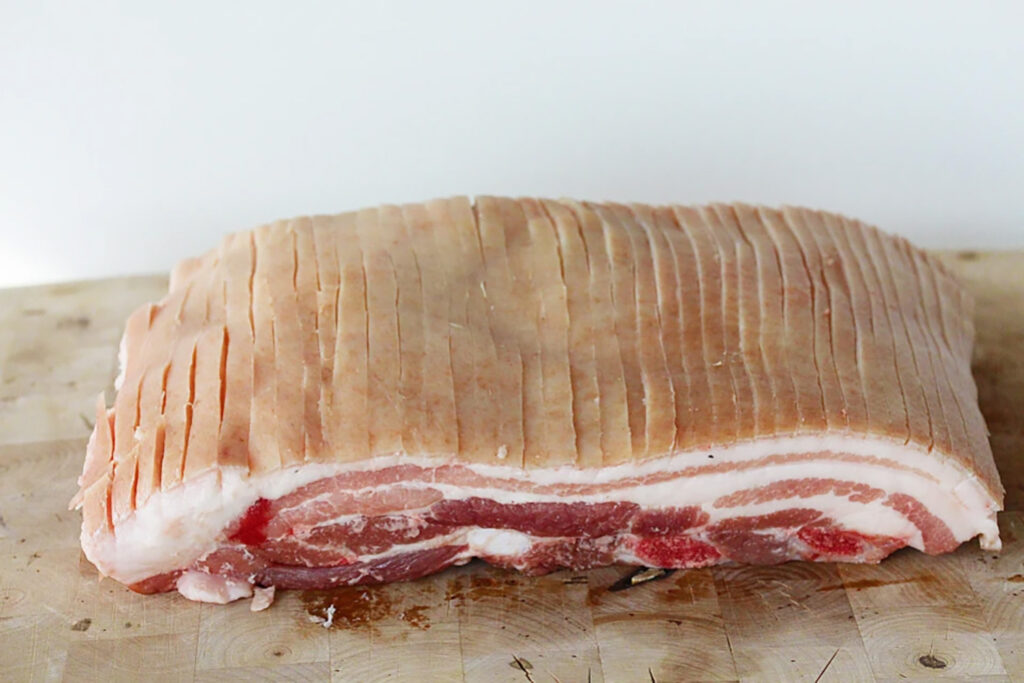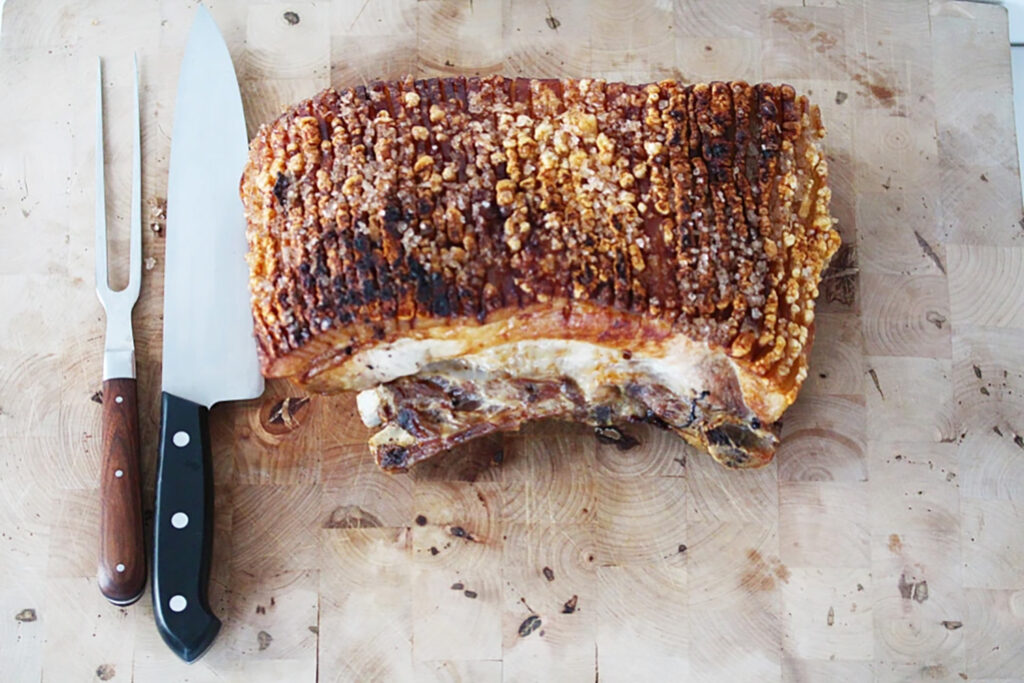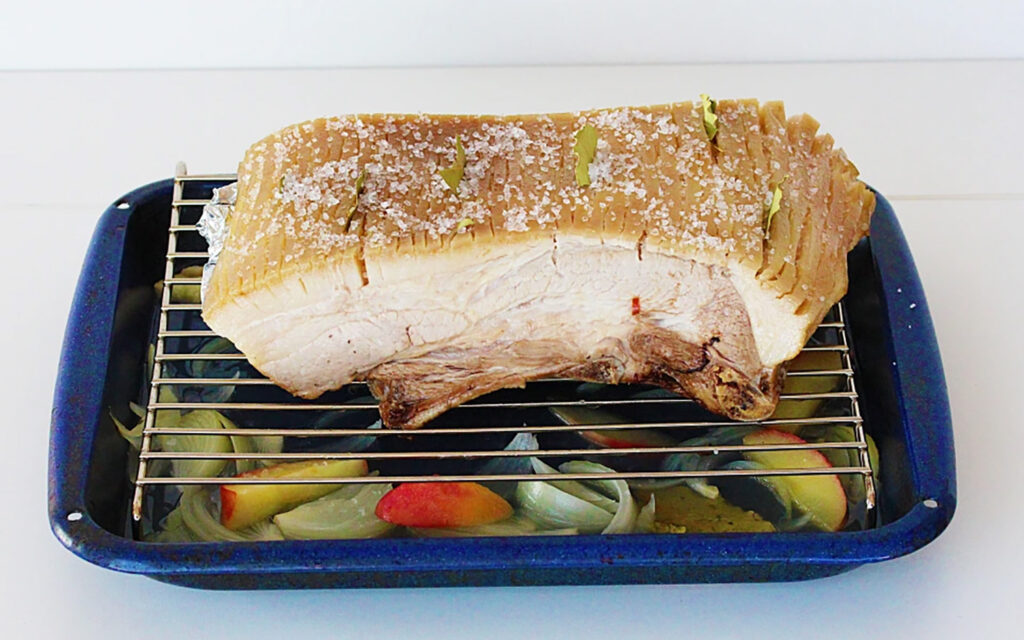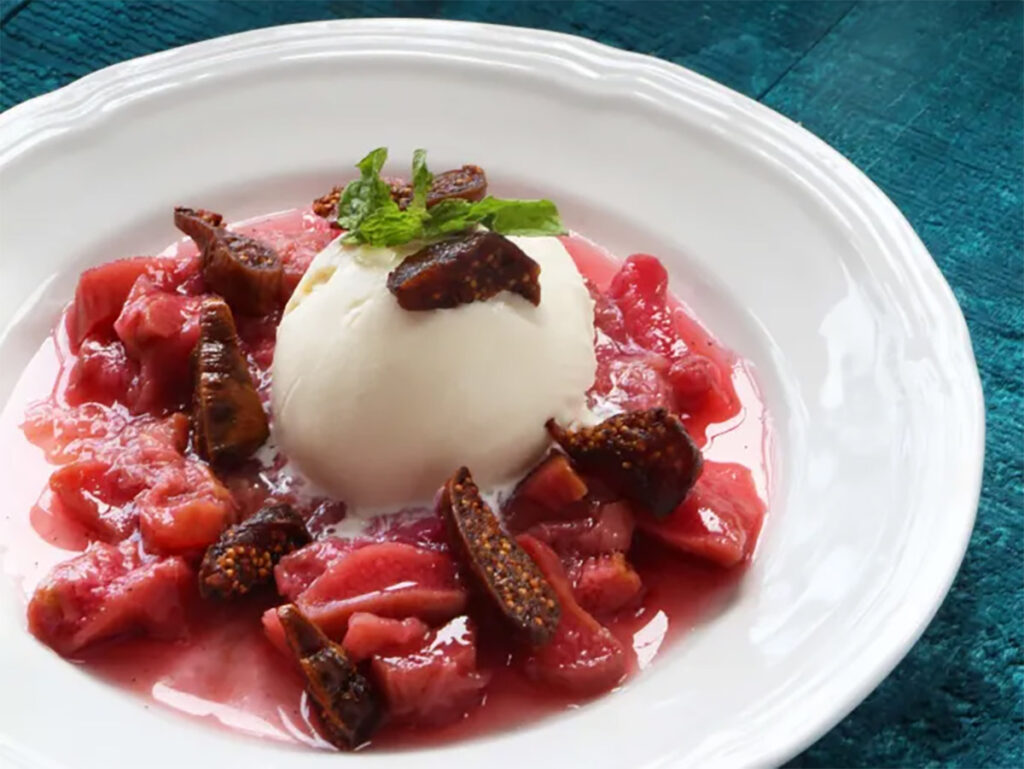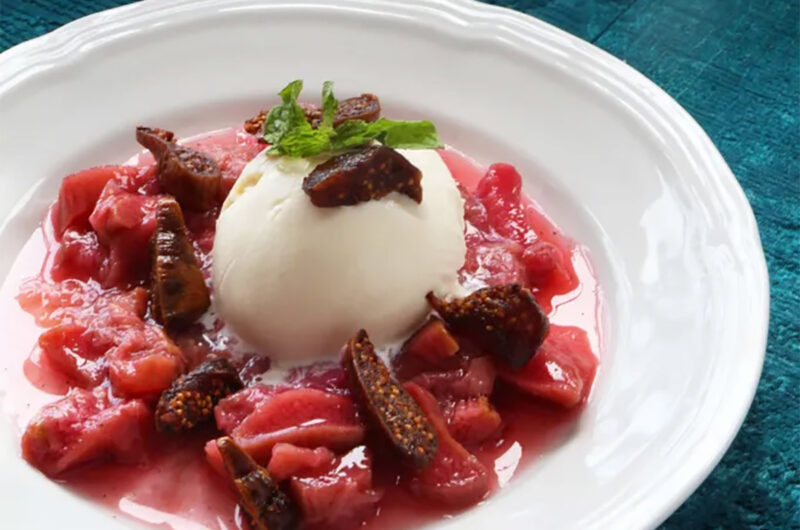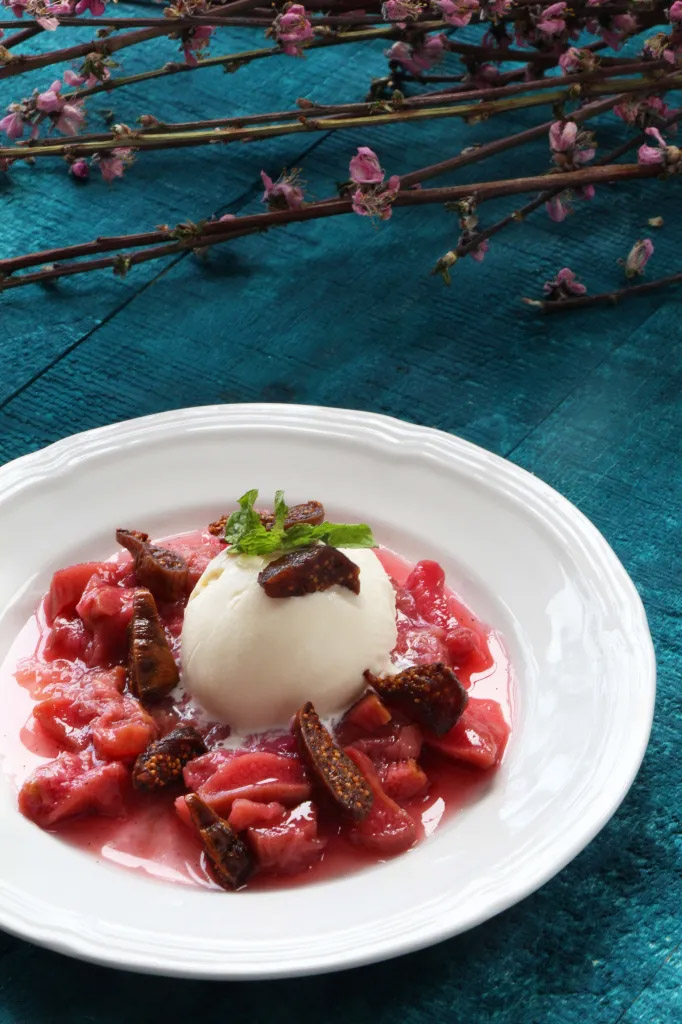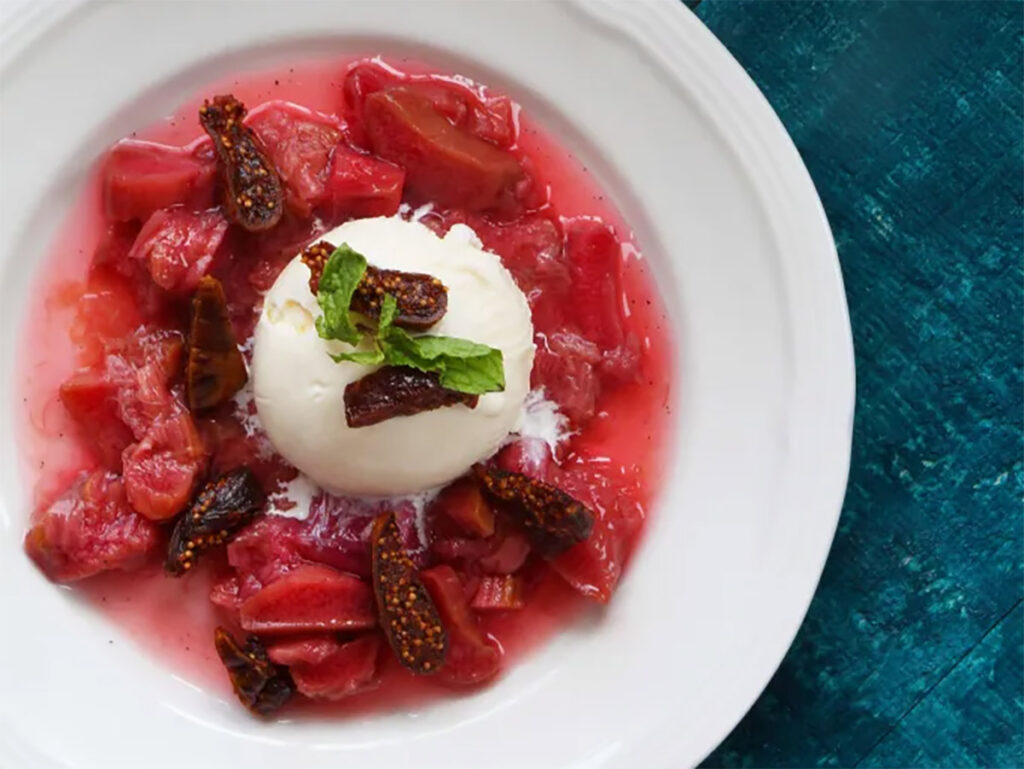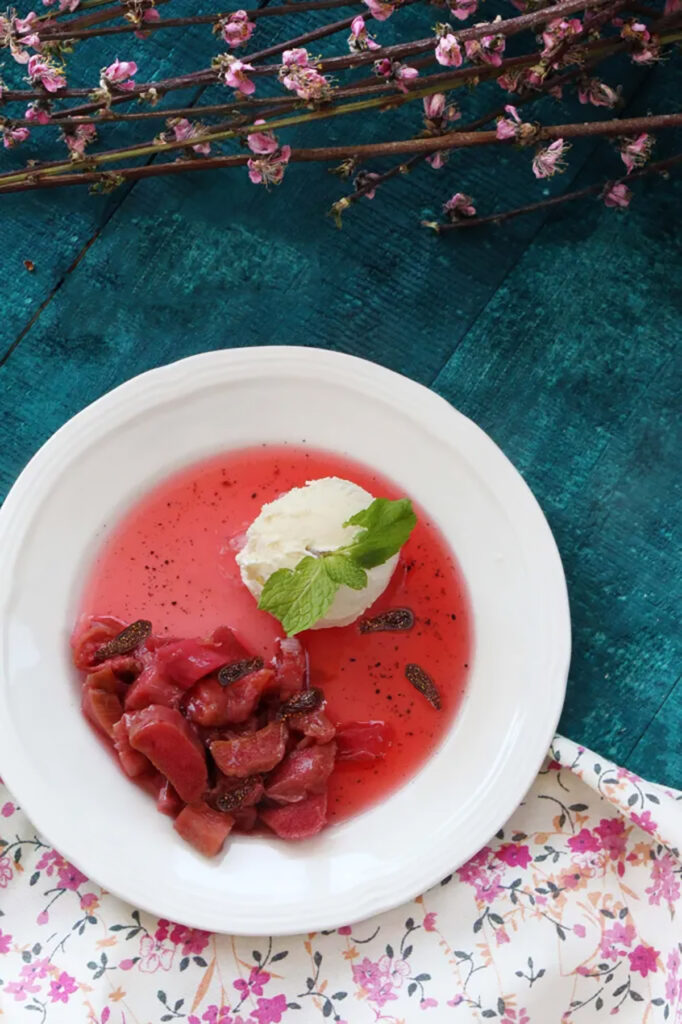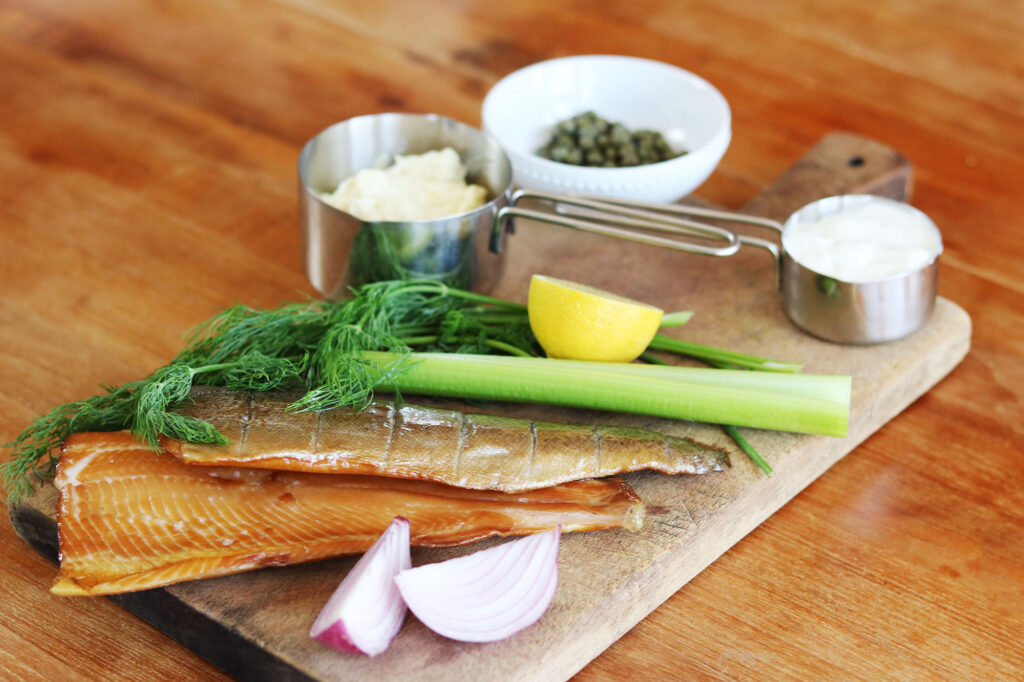
Get ready for a simple and tasty dish that’s perfect for any occasion – the Smoked Trout Salad! In Denmark, we eat a lot of smoked fish, and this kind of fish salad would be an obvious choice for lunch, served with rye bread or crisp bread. Inspired by the easy-going vibes of Scandinavian cooking, this no-fuss recipe brings together the goodness of smoked trout with zingy, fresh ingredients to create a delicious meal everybody will love. Whether you need a quick lunch or a shareable appetizer, this smoked trout salad has got you covered. It’s all about the perfect combo of flavors and textures, making it a mouthwatering meal. So let’s get started on this awesome recipe, as we whip up a tasty smoked trout salad that’s perfect for any day of the week.
Recipe + Notes by Tina, Founder, Hungry Bird Eats:
When I am cooking, I often use yogurt instead of sour cream or mayonnaise. I always have Greek yogurt in my fridge, and I like the flavor and the texture better.
This recipe yields enough trout salad for 4 persons as a snack, or for 2 persons as lunch, served with your choice of bread.
-
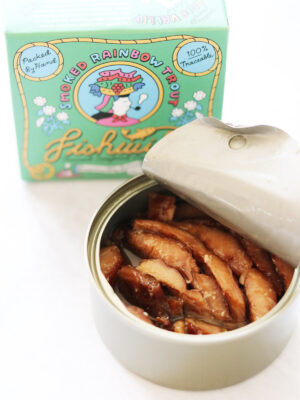 Smoked Rainbow Trout$13.00
Smoked Rainbow Trout$13.00
